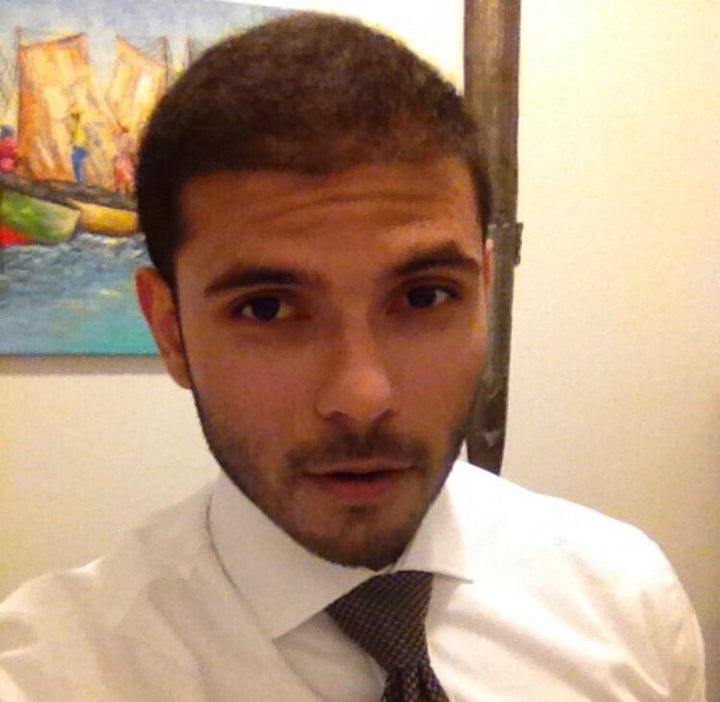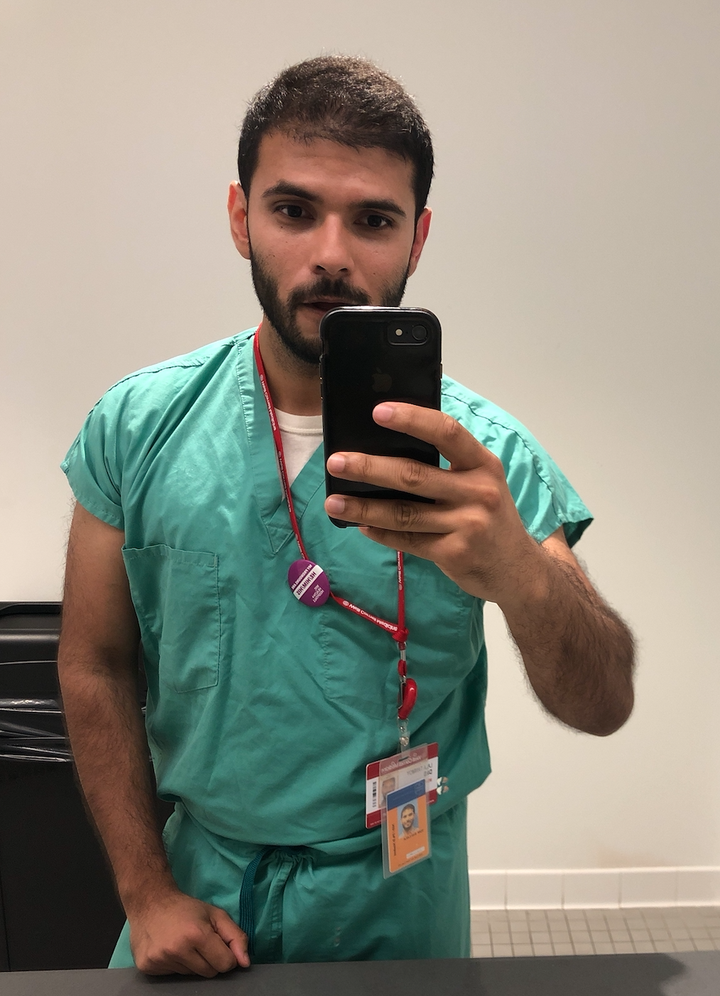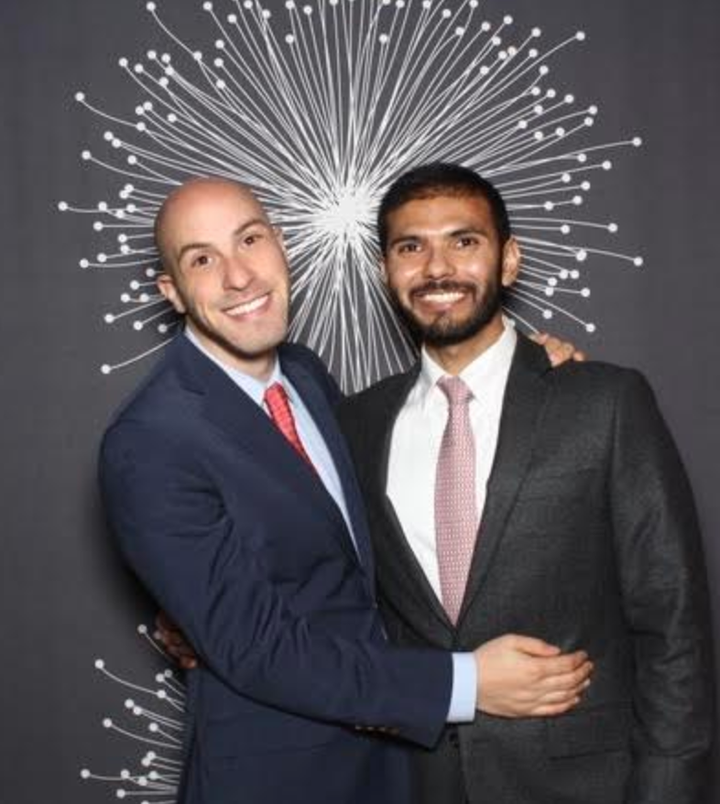
My reputation among friends is the guy who never watches TV. But toward the end of July, my best friend insisted: “You have to watch this new Netflix show called ‘Indian Matchmaking’ starring Sima Taparia, who is apparently Mumbai’s top matchmaker.”
“Why?” I asked.
“It’s about arranged marriages in the Indian community. I think you’ll get a kick out of it,” he replied.
But the truth of the matter was that I didn’t need a TV show to explain the nuts and bolts of arranged marriages. In fact, I was intimately aware of the rigmarole, having grown up in a religious Hindu family in India.
I spent most of my childhood surrounded by relatives vying for crème de la crème suitors for their children and grandchildren, decrying “love marriages” as disrespectful and destined to fail, rejecting portfolios of matches from “lower caste backgrounds,” and comparing pedigrees and horoscopes with scientific rigour.
I grew up being made to believe that marriages were between families (not individuals), and to be in a successful marriage the female partner must have a “good biodata,” which means she must be educated, but not too educated or else she would be demanding, be soft-spoken and have a “fair” complexion. An aunt once said at a family event: “Marrying a dark girl is bad karma.”
And once, when I was 14, I asked my uncle: “What if a man loves another man?” His look of revulsion has stayed with me to this day. A same-sex arrangement was unimaginable. What would the neighbours say? What would the community think? I remember a pharmacist having to close up his shop after his son came out as gay. Once the news spread, community members boycotted the store “to teach him and his family a lesson.”
For us, arranged marriages weren’t a form of entertainment or a spectacle confined to television characters. They were the conduits to our cherry-picked realities through which our family grew, or sometimes fell apart. Every now and then, my family would joke about the unbearable anticipation of finding my future match. And by the time I was 16, they had already decided which newspapers would carry an ad with my photograph looking for a wife who would be slim, demure and have a “good biodata.”
But their matchmaking hopes were dashed as I left India after high school to pursue a college degree in America. And while they felt a deep sense of disappointment, even regret, in my conscious decision to leave them behind ― where shirking my parental responsibilities was a personal affront, an attestation of “poor upbringing” as my neighbours reminded my parents ― I was glad to be able to escape and redefine many aspects of my personal life, including avoiding the theatrics of arranged marriages.
But little did I know then that 12 years later, my life would be like an episode of “Indian Matchmaking.”

I started medical school at age 30 after a four-year stint at a finance firm. And a few months later, I was assigned to a New York City emergency room to start preceptorship, where I would be seeing patients and taking their clinical histories under the watchful eye of an attending physician.
As I walked into the triage area on my very first day, I was greeted by Dr. M. in burgundy scrubs. And after a brief exchange of small talk and pleasantries, he said: “I have the perfect patient for you to practice your history-taking skills on. You might need an interpreter though; I don’t think she speaks English.”
But I didn’t need an interpreter. What Dr. M. had confused for a foreign language was actually English with a thick Indian accent. She also spoke the same Bengali dialect that I did growing up, so understanding her medical concerns was not an issue.
After making sure she was comfortable, we discussed what brought her to the emergency room, her past medical history, medication allergies and social history (among other things). Her symptoms indicated heartburn, but I needed to relay the information to Dr. M. so he could loop her in. Before finishing the encounter, I thanked her for answering all my questions and asked if she had any for me.
“Actually, I do,” she replied. “Are you from India?”
“Yes,” I said and smiled.
“Nice, beta [son]. How long have you been here?”
“Over 12 years now. But eight in New York.”
“I see. I see. And do you have a wife? Any kids?”
I laughed. “No, no. I don’t. Why?”
“I have a 23-year old daughter and she’s still single,” she said. “I told her yesterday that she needs to get married soon. I want her to marry a nice Indian boy ― preferably a doctor or a lawyer, you know, one with a nice biodata like you. Let me show you pictures.”
I was confused yet entertained by what was happening, but didn’t revolt. She pulled out a dozen Polaroid photos from her goatskin leather handbag and held them like a deck of cards. “What do you think? Interested?” she asked.
“She looks great, but I’m actually seeing someone. Thank you for thinking of me though,” I said sheepishly and excused myself.
Heartburn or not, my local Sima Aunty had arrived. (In India, any older person is often endearingly referred to as Aunty or Uncle.)
I wish I could say that the impromptu matchmaking was an isolated incident, but it wasn’t. The following week, a patient tried to set me up with her niece in Philadelphia who was graduating from Penn with a degree in psychology. The week after, Mrs. S asked if she could take a photo of me to show to her neighbour’s daughter, who apparently was the best jalebi (an Indian dessert) maker in Englewood, New Jersey, and also spoke fluent Russian.
The questions didn’t stop at the prospect of sharing photos. Some wanted to know the brand of car my father drove. Others wanted to know if my mother was a housewife. Did I go to a local Hindu temple? Did I keep up with the latest Bollywood flicks? And most importantly, why wasn’t I married?
Being asked those questions ― albeit personal and sensitive ― never bothered me. Instead, they made me nostalgic. It was also a stark reminder of my naïveté in thinking that trading continents could magically morph a culture like flipping a switch.
Perhaps the questioning was a hallmark of collectivist cultures that were the joy and pride of every Bengali family ― no secrets were to be kept; everything was meant to be communal knowledge. I grew up watching my mother ask similarly personal questions to strangers and acquaintances, taking upon herself the role of a matchmaker to “help out a sister,” as she proudly proclaimed. No one was ever offended. Or, if they were, it was behind closed doors.
But what did bother me was an old insecurity, being rewound and replayed during these emergency room shifts.
It is true that I don’t have a wife. However, I could never get myself to volunteer the fact that I am indeed happily married ― to a man.

Perhaps the hesitation was rooted in the estrangement from my parents when I finally came out to them that had rattled me deeply and filled me with fear. When I craved their presence, I received silence. When I implored their encouragement, I received anger.
The ferocious sense of fear had lived with me and I worried that saying anything about a husband would alienate my patients — especially those I shared the same background with. Was talking about my life necessary? Wasn’t what was bringing us together their moments of vulnerability, not mine? Or was I afraid that they would look at me differently? Think of me as flawed? Mistrust my medical judgment?
Choosing not to wear a wedding band is turning out to be a big mistake, I thought.
Maybe some people wouldn’t care. Maybe it could be a teaching point for others. After all, how would society change if the vectors themselves stayed mute? But the drive to elicit change would quickly dampen as the words from a colleague’s mother would play in my ears: “Ultimately, we have to accept whatever lifestyle choices you young people make, don’t we?”
I screamed.
To be out to one group of people and closeted to another is a strange dichotomy to live with. But every time I skirt around the question of wife and kids from the Sima Aunties in my professional life, I clutch my wallet afterward, and give it a tight squeeze so that the matte photograph of my husband’s face that rests between the taut leather sleeves feels the tenderness of my grip. When I try to explain the dichotomy to my friends, especially the non-Indian ones, they scoff at me, or look confused. Some say, “But it’s 2020!” Others say, “You’re married. Get over it. What do you have to lose?”
While it is indeed 2020, and I have little left to lose, there is probably a reason why the Netflix show didn’t feature a single same-sex couple ― and it is no coincidence. Although Indian culture is changing, and little victories in LGBTQ rights are being celebrated, shifting the minds of entire generations will take some time.
At the same time, I am painfully aware that despite the anticipation of estrangement and the fear of alienation, the needle of mainstream representation will never move unless individuals like me engage in dialogue to diffuse the disgust, the hatred, and the embarrassment around queerness in my culture.
And with doing so, perhaps one day my real-life Sima Aunty, while resting on a stretcher, hooked to a telemetry monitor, will instead ask me: “Do you have a wife? Or a husband? Or someone else in your life who you love?”
Lala Tanmoy (Tom) Das is an MD-Ph.D student in the Weill Cornell/Rockefeller University/Memorial Sloan Kettering Tri-Institutional Program. He lives with his partner Eric in New York City.
Do you have a compelling personal story you’d like to see published on HuffPost? Find out what we’re looking for here and send us a pitch!